Amazing Star Birth Photos: ALMA Telescope's Views of Herbig-Haro Object HH 46/47
Herbig-Haro Object HH 46/47
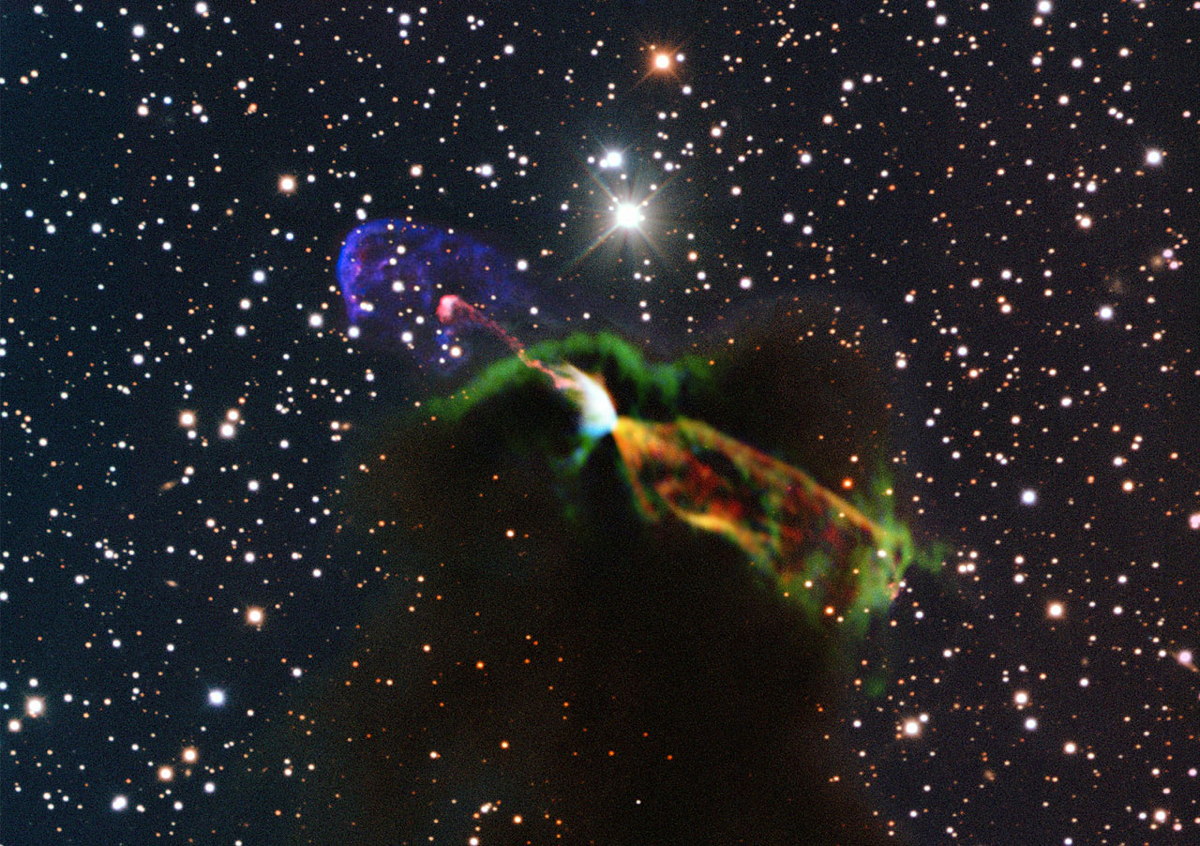
This image of Herbig-Haro object HH 46/47 combines radio observations acquired with the Atacama Large Millimeter/submillimeter Array (ALMA) with much shorter wavelength visible light observations from ESO’s New Technology Telescope (NTT). The ALMA observations (orange and green, lower right) of the newborn star reveal a large energetic jet moving away from us, which in the visible is hidden by dust and gas. To the left (in pink and purple) the visible part of the jet is seen, streaming partly towards us. [Read the Full Story]
ALMA’s View of Herbig-Haro Object HH 46/47 Outflow
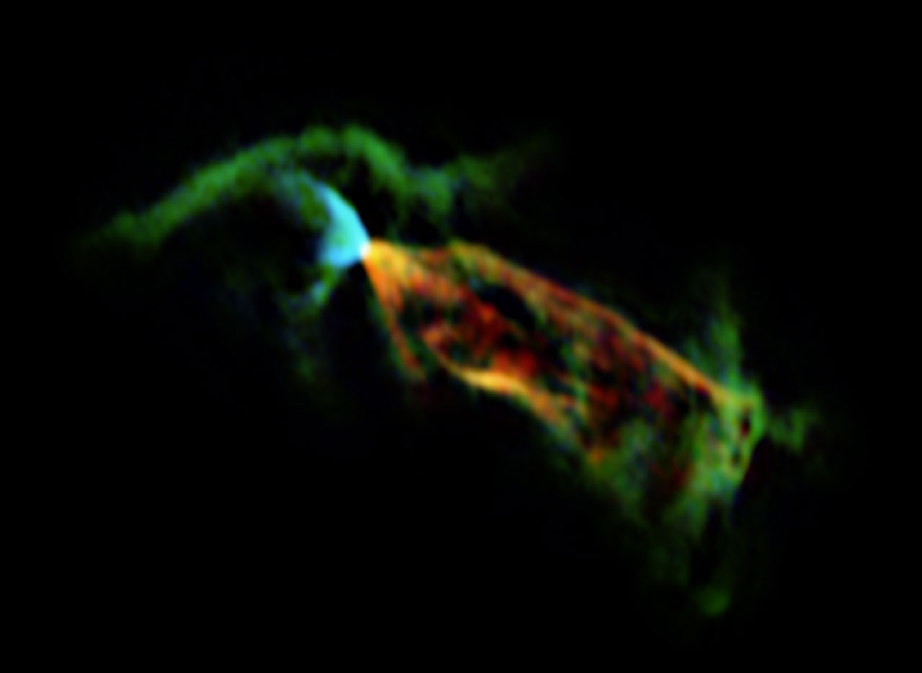
Astronomers using the Atacama Large Millimeter/submillimeter Array (ALMA) have obtained a vivid close-up view of material streaming away from a newborn star. By looking at the glow coming from carbon monoxide molecules in an object called Herbig-Haro 46/47 they have discovered that its jets are even more energetic than previously thought. In these observations from ALMA the colours shown represent the motions of the material: the blue parts at the left are a jet approaching the Earth (blueshifted) and the larger jet on the right is receding (redshifted). [Read the Full Story]
ESO’s New Technology Telescope View of Herbig-Haro Object HH 46/47
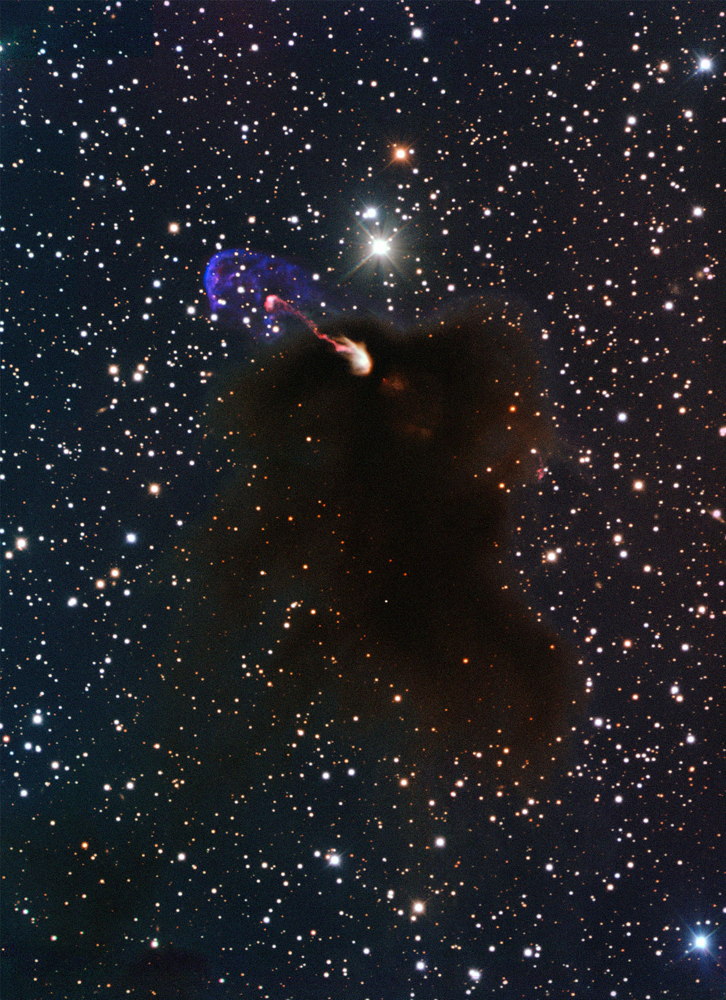
This image from ESO's New Technology Telescope at the La Silla Observatory in Chile shows the Herbig-Haro object HH 46/47 as jets emerging from a star-forming dark cloud. This object was the target of a study using ALMA during the Early Science phase. [Read the Full Story]
How the Huge ALMA Radio Telescope Works (Infographic)

Made up of dozens of small radio telescope dishes, the ALMA telescope will be one of the most powerful in the world when finished. See how it works in this ALMA Telescope Infographic.
Star-Forming Region Around the Herbig-Haro Object HH 46/47
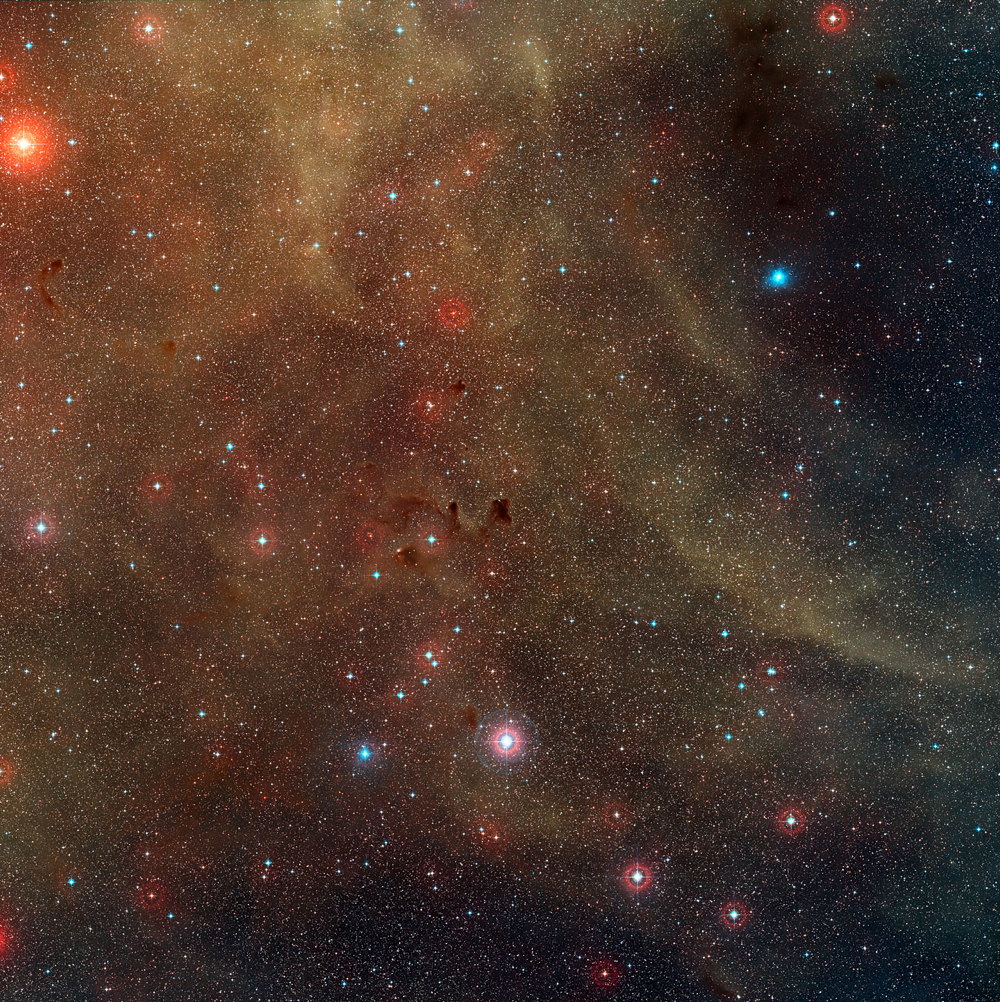
This wide-field view shows a rich region of dust clouds and star formation in the southern constellation of Vela. Close to the centre of the picture the jets of the Herbig-Haro object HH 46/47 can be seen emerging from a dark cloud in which infant stars are being born (to zoom in use the zoomable version of this image). This view was created from images forming part of the Digitized Sky Survey 2. [Read the Full Story]
Herbig-Haro Object HH 46/47 in Vela
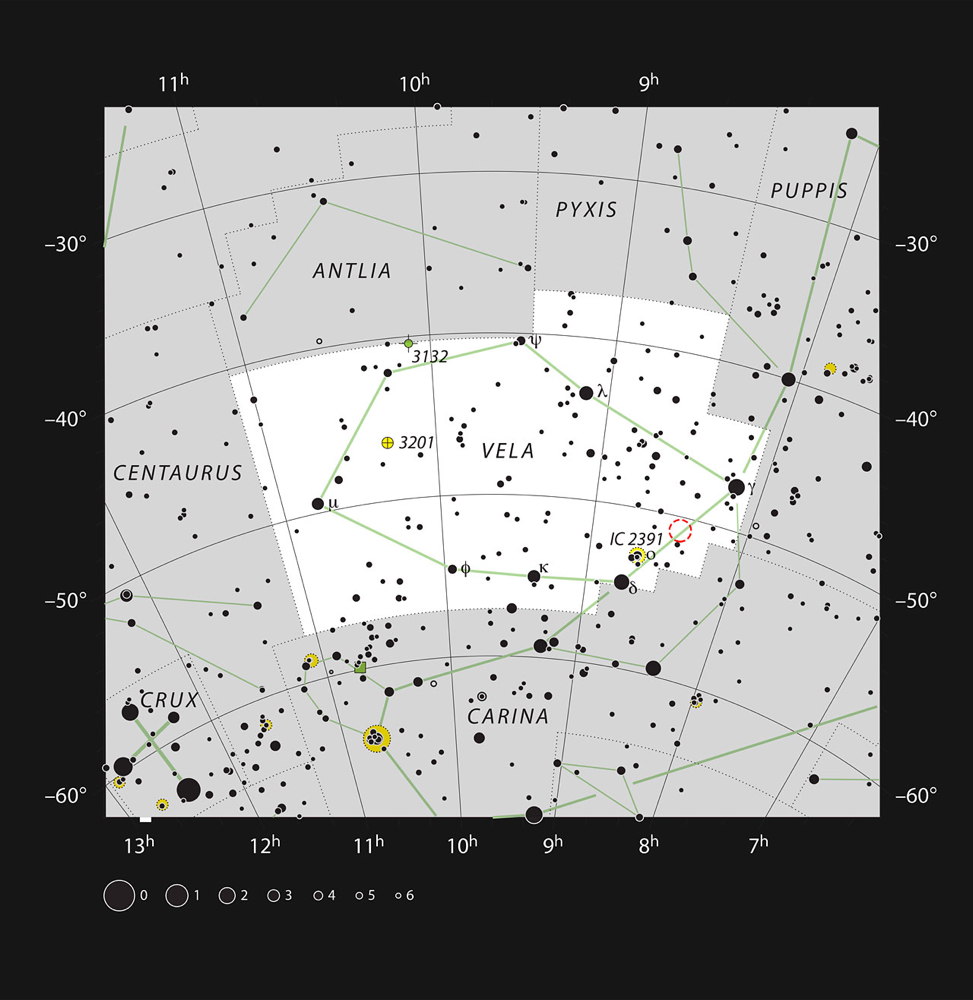
This chart shows the southern constellation of Vela (The Sails). Most of the stars that can be seen in a dark sky with the unaided eye are marked. The location of the star formation region that hosts the Herbig-Haro object HH 46/47 is indicated with a red circle. They cannot be seen visually with a small telescope. [Read the Full Story]
Get the Space.com Newsletter
Breaking space news, the latest updates on rocket launches, skywatching events and more!
Join our Space Forums to keep talking space on the latest missions, night sky and more! And if you have a news tip, correction or comment, let us know at: community@space.com.

Space.com is the premier source of space exploration, innovation and astronomy news, chronicling (and celebrating) humanity's ongoing expansion across the final frontier. Originally founded in 1999, Space.com is, and always has been, the passion of writers and editors who are space fans and also trained journalists. Our current news team consists of Editor-in-Chief Tariq Malik; Editor Hanneke Weitering, Senior Space Writer Mike Wall; Senior Writer Meghan Bartels; Senior Writer Chelsea Gohd, Senior Writer Tereza Pultarova and Staff Writer Alexander Cox, focusing on e-commerce. Senior Producer Steve Spaleta oversees our space videos, with Diana Whitcroft as our Social Media Editor.









